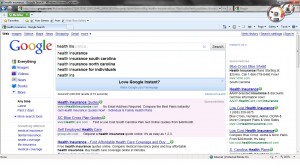SEO: Is an obscure product name hurting your organic traffic?
Product naming and branding can get out of hand. Sure, it’s important to differentiate your product names — but you can differentiate yourself right into obscurity.
Technology products seem susceptible to this. The “XQ330 Plus” is a completely plausible name for a phone, camera, latte machine, or some type of hybrid. Other than being original, the name does not offer any marketing benefit.
This is a problem for SEO marketers. The XQ330 may be able to capture traffic for branded search terms, particularly if the company has a strong advertising budget. But it is vulnerable to a complete lack of non-branded organic traffic — and non-branded traffic is SEO’s money maker.
“Many times a marketer will come up with a name or way to describe a product in a vacuum, and that doesn’t always translate well to the Web — especially in search,” says Brad Beiter, Account Director, SEO, Performics.
I recently interviewed Beiter and Performics SEO Account Manager Matthew Holly about some work they’ve done for retail marketers. The methods they use offer good insight into what marketers can do when — for whatever reason — they’re stuck with obscure product names.
When you’re stuck with an obscure product name
If you can’t change a product’s name, one good method is to change its description. Say, for example, your company sells socks. On your website, socks are referred to as “shoe liners” and one in particular is called the “white fuzzy warmer.”
Due to the inflexibility of your website or some other factor, you cannot change these terms. But what you can do is change your product descriptions. Re-rewrite them to emphasize high-traffic, non-branded keywords. For example:
“These soft white cotton socks keep you warm whether you need a boot, athletic or dress pair.”
You can also optimize other on-site factors for non-branded terms, including:
o Internal links
o Image and video metadata
o Sub-headlines
Do not let cumbersome product names hold your SEO hostage. There are many on-site factors you can optimize to pull in more traffic. And from now on, when your team is naming products, make sure you’re at that meeting.
Related resources
MarketingSherpa 2011 Search Marketing Benchmark Report
New Chart: SEO Tactics for the B2B Marketer
MarketingExperiments: Use Social Media and Quality Content to Get a Jolt for Your Site









